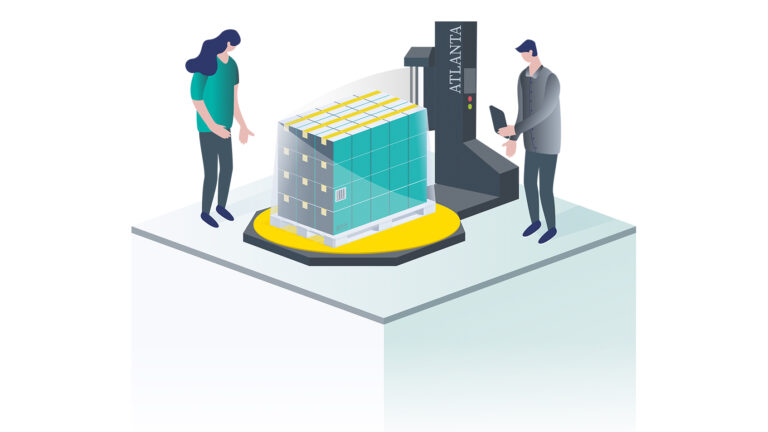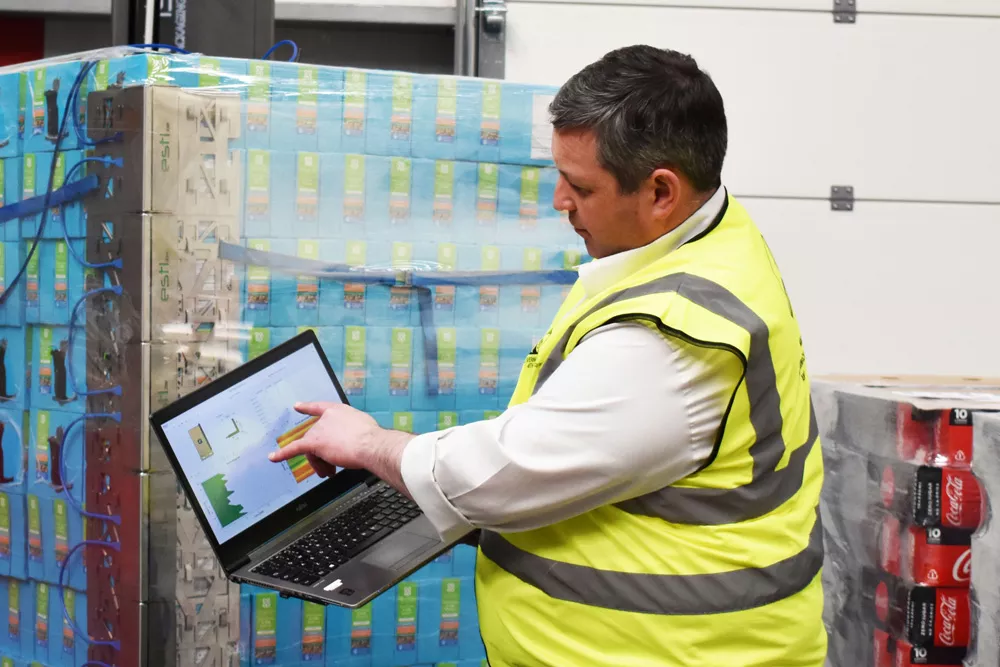First, we really get to know your operations, challenges and opportunities to improve. One of our experts will test your current system, looking into materials and every machine used, efficiency of material use and time taken to prepare each pallet, and stretch and stability achieved. We’ll also want to know about any challenges you face, or particular areas you’re keen to optimise or improve.
Our discovery phase will lead to a full report and a fully-costed recommendation designed specifically for you. These recommendations will not only address your specific concerns or challenges, but also identify opportunities to reduce costs, minimise resources and materials used, optimise safety, speed and stability to deliver the ultimate in pallet wrapping performance.
Once you’re happy with our recommendations, we’ll get to work developing and setting up your new system. We spend time on ensuring that set-up is perfect, fully tested and only handed over to you when we’re happy it’s performing as it should. Your staff will be fully trained to continue making best use of the system, and comprehensive training and reference materials will be left with you. We’ll keep in touch, so you have access to our experts with any queries or questions as the new system beds in.
An optimised system requires regular auditing, so this is part of the service. We’ll ensure that you’re able to continue meeting targets, making genuine savings on resources, materials and costs, optimising safety and stability, and will make sure that the system is performing at its best. We’ll always be happy to discuss new and emerging challenges or ambitions – we like to think we can find a way!

Unstable loads in transit are the cause of an estimated quarter of all traffic accidents involving transport vehicles. Not only is our intelligent load stability system reducing accidents on the roads, it also makes moving, storing and stacking pallets safer on site too.
Our intelligent load stability system can get a super-stable 300% stretch out of Extremus film. This significantly reduces your plastic waste, lowers your PRNs, and allows you to forget other protective packaging too. Great news for your bottom line and the environment!
Nano-tech stretch film, optimised for best use, means savings on materials and it also means more stable loads, quicker wrapping, reduced downtime, neater and easier stacking and storing and fewer damages and returns. That all adds up to serious savings.
Delivering improved load stability and the lowest cost per pallet wrapped, whilst minimising your plastic usage and carbon footprint.
We provide the complete, end-to-end, solution. Our combination of advanced films and high performance wrapping machinery is delivered through a relentless commitment to customer service and technical excellence. Our engineers and technicians provide expert advice and ongoing support to ensure your pallet wrapping solution remains fully optimised to your requirements.
As packaging pioneers in stretch film, we revolutionised the market with Extremus Films and Intelligent Load Stability. Focussing on price per kg means you could be using more film per pallet, distributing unstable loads and operating inefficiently. As your packaging partner we review all of these direct and indirect costs, ensuring optimised processes, stable loads, and the lowest cost per pallet wrapped.
Wrapping your pallet loads safely and securely is essential to prevent potential accidents, product losses and hefty fines for delivery non-conformance. This reduces the chances of having the additional expense and hassle of reworking products. Pallets need to be able to cope with any accelerations or decelerations without losing their structure or rigidity. The EU legislation introduced in 2018 put the responsibility for securing cargo safely on everybody from the producer of the pallet load to the driver. Critical to safe and secure pallets, is making sure you use a high quality stretch film that’s applied properly and consistently using the correct machine settings or by hand.
Experts in workplace supplies, the customer looked to us to help optimise their pallet wrapping process. When we first visited the customer their pay-per-wrap contract was almost up – the ideal time for us to step in to improve load stability whilst also reducing costs and plastic usage.
